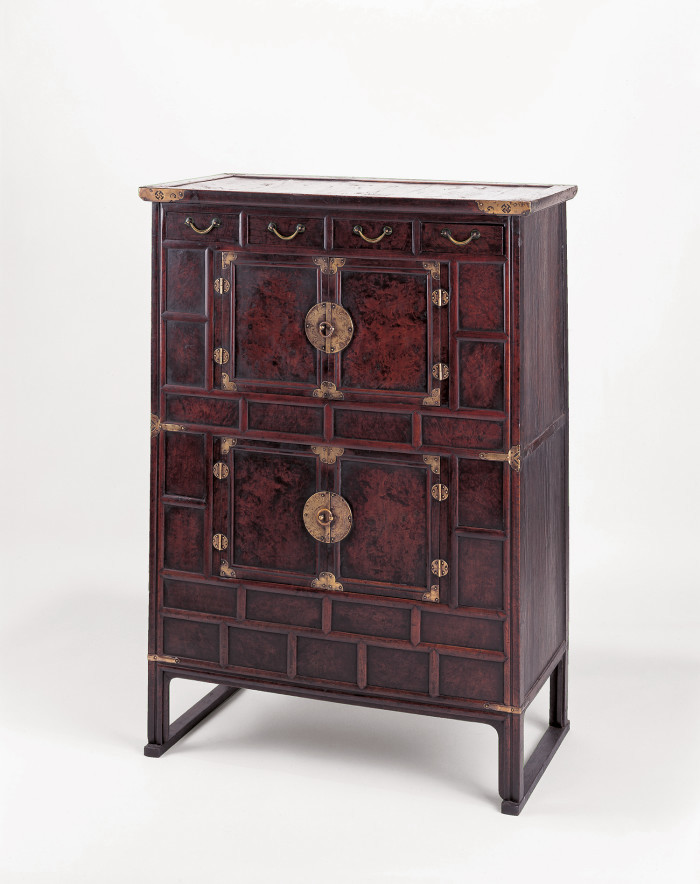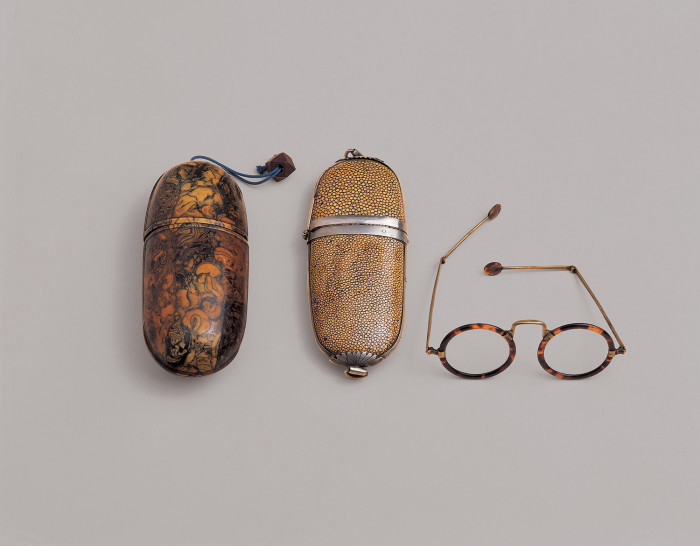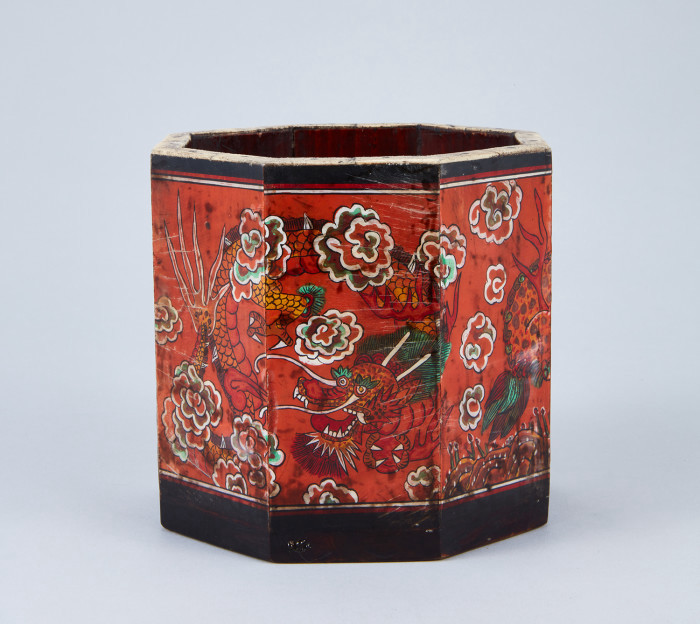GyeongGi Cultural Foundation
GyeongGi Style' spreaded across the country
The 2020 Joongbu Ilbo series 〈Gyeonggi-do Museum〉 is a content produced in a total of 10 series by the GyeongGi Provincial Museum, which has undergone a complete reorganization of the exhibition hall in celebration of the 25th anniversary of its opening. If you would like to see more detailed 〈Gyeonggi Province Museum〉, you can enjoy it in the original text on the Jungbu Ilbo website. |
Folklore of Gyeonggi Province: GyeongGi Style

[Photo] Gyeonggi medicine store
It was elaborated by erecting a single pillar from the upper top to the lower base. Overall, when viewed from the front, it looks like a two-stage configuration or a three-stage configuration by adding two side brackets to the side panels.
During the Joseon Dynasty, Gyeonggi-do was a major route from 8 provinces nationwide to Hanyang. From everyday paths to all directions, to China, and to Japan, all roads to the world went through Gyeonggi. Aqueducts using the Han River and Imjin River also flourished. In the area where the port and riverside of Gyeonggi Province are located, numerous people and products gathered, becoming the center of water transport that connects the whole country.
Through these geographic features, Gyeonggi-do exchanged and influenced not only Hanyang's leading culture, but also various cultures in various places. Naturally, these traces can be found in the existing folk traditions over a long period of time. Gyeonggi Dodang-gut has been handed down beyond Gyeonggi to Seoul and Incheon, and it is worth paying attention to the fact that the sound of Gyeonggi is similar in content and formal structure to that of Hwanghae-do and Pyeongan-do. How about the peasant music in the plains where the GyeongGi was hit? It is a well-known fact that they are tied together with a pair of peacocks, so that they are in contact with Chungcheong-do's nongak. Furthermore, Yeoju, Yangpyeong, and Gapyeong have been closely sharing the mountain village lifestyle that connects with the western part of Gangwon across administrative boundaries.
It was the socio-economic changes that took place in the late Joseon Dynasty that further highlighted the characteristics of Gyeonggi Province in history. Due to the implementation of the Daedong Act and the development of the commodity currency economy, Jiangxi [private market usually held every five days in the late Joseon Dynasty], which was created in the 15th century, was opened in Gyeonggi-do alone. The tattoo artist Deoksu Lee, who was active during this period, sang realistically about the prosperous atmosphere of Jiangxi.
...The GyeongGi from the sky has formed a magnificent affiliate
The towns everywhere seem to be surrounded by stars
Products run wild on all roads
Among the 15 largest Jangsi in the country, there are Gwangju Sapyeongjang and Songpajang, Anseong Eupnaejang, and Gyoha Gongneungjang. Jangsi developed into urban and commercial long cities, centering on major roads connecting from Hanyang to Gyeonggi-do to the whole country, namely, Samnam-ro and Yeongnam-ro to the south, and Uiju-ro to the north. According to an article in Sukjong's Annual Registration of Non-Byeonsa, ‘Anseong is a key point of Samnam, where officials, craftsmen and merchants gather. In addition, Kaesong merchants were active in Gaeseong with the development of the same cast as Hanyang’s Yuuijeon, and products were actively traded in the 19th century as a new town was established in Suwon.
In Jiangxi and its surroundings, not only goods were traded, but information on local life was exchanged, and wrestling competitions were held in accordance with major seasons and holidays. Namsadang Pavilion or a play team came to perform and provided a variety of attractions, which was a factor that sparked the cultural activities of the common people. This aspect can be found in the case of the development and transmission of Yangju Byeolsandaenori. Originally, Sandae-nori was popular in Hanyang and Gyeonggi areas by combining mask dance, pantomime, and joke. However, in Yangju, lower-level officials with talent for performance and the common people joined forces to become more active in the region. It has created a unique tradition of Sandaenori.


<Copyright(c)2002 GGC All rights reserved.>
- Writer
- GyeongGi Cultural Foundation
- About
- Everything about the GyeongGi arts and culture, GGCF
- homepage
- https://www.ggcf.kr/